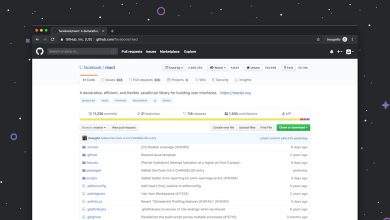
POS Systems With WooCommerce Integration
In the modern retail landscape, the fusion of physical and digital commerce is no longer optional — it’s essential. For businesses running WooCommerce, integrating a Point of Sale (POS) system can be a game-changer. A POS system with WooCommerce integration not only supports seamless inventory and sales management but also bridges the gap between brick-and-mortar stores and online sales channels.
Why Integrate POS Systems With WooCommerce?
WooCommerce has rapidly grown into one of the most trusted e-commerce platforms for WordPress users due to its flexibility, scalability, and robust ecosystem. However, managing online and in-store sales separately can lead to operational inefficiencies, inventory discrepancies, and poor customer experiences. This is where a POS system integrated with WooCommerce shines. Such an integration offers:
- Real-time inventory synchronization between online and physical stores
- Centralized customer data for a unified shopping experience
- Streamlined order management across all sales channels
- Improved reporting and analytics to support strategic decisions
By merging the capabilities of a POS with the flexibility of WooCommerce, retail businesses can optimize their operations and deliver better service to their customers.
[ai-img]retail store, ecommerce, point of sale[/ai-img]Key Features to Look For
When selecting a POS system for WooCommerce integration, businesses should consider features that align with their operational needs. The right system should be more than just a glorified cash register. Look for the following critical features:
- Two-way inventory updates: Ensures inventory levels are consistent across all platforms without manual input.
- Customer profile integration: Maintain a unified database of customers’ purchase history and preferences.
- Secure payment processing: Enable multiple payment options — credit cards, mobile payments, and store credit — both online and in-store.
- Multi-store and multi-user support: Necessary for businesses managing several physical locations or a large staff.
- Offline capabilities: Keep sales operations running smoothly even if internet connectivity drops temporarily.
Benefits of POS-WooCommerce Integration
Integrating your POS system directly with WooCommerce brings numerous advantages that can significantly enhance operational efficiency and customer satisfaction:
1. Unified Inventory Management
Say goodbye to double data entry and stock mismatches. When a product is sold in your physical store, the inventory levels are immediately reflected on your WooCommerce website, and vice versa. This reduces overselling and ensures your stock levels are always accurate.
2. Enhanced Customer Experience
With a synchronized customer database, you can create personalized experiences both online and in-store. Loyalty programs, promotions, and targeted marketing campaigns become more effective when you have a full picture of customer behavior across all platforms.
3. Improved Business Intelligence
Having a centralized system enables better reporting. You can analyze trends, peak sales periods, preferred payment methods, and other key metrics in one comprehensive dashboard, simplifying strategic planning and inventory forecasting.
[ai-img]data analytics, sales report, business dashboard[/ai-img]Popular POS Systems That Integrate With WooCommerce
There are several high-quality POS options that offer native or third-party integration with WooCommerce:
- Square for WooCommerce: A popular choice for small businesses, featuring a clean interface and powerful features.
- Lightspeed POS: Ideal for more complex retail operations, with multi-store functionality and advanced analytics.
- Vend by Lightspeed: User-friendly with strong inventory features and seamless WooCommerce linking via plugins.
- Hike POS: A cloud-based system that syncs easily with WooCommerce and supports both online and in-store operations.
Implementation Considerations
Implementing POS-WooCommerce integration isn’t plug-and-play. Businesses need to plan carefully:
- Assess compatibility: Not all POS systems support WooCommerce natively — plugins or middleware may be necessary.
- Data migration: Ensure smooth transition by syncing existing customer, product, and order data accurately.
- Staff training: Employees must be comfortable navigating the integrated system to prevent operational hiccups.
Conclusion
A POS system integrated with WooCommerce offers a comprehensive solution for modern retail. By connecting online and in-store sales, businesses can improve accuracy, boost productivity, and deliver superior customer service. As retail continues to evolve, investing in this kind of integration is not just a smart move—it’s essential for long-term competitiveness in a digital-first marketplace.



